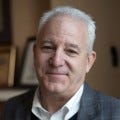Repairing the Urban Fabric Ruined By Highways
From the hills behind the City Hall in my adopted hometown of Ventura, California, it’s less than 1,000 yards southward to the Pacific Ocean. It’s a constrained piece of topography that, as I have written elsewhere, creates a small urban gem of a downtown: streetscapes, restaurants, stores, offices, residences, parking garages, a beachfront promenade — all within eight or so square blocks, creating a lively streetlife that connects a historic downtown to the beach.
But this narrow slot is also a critical part of California’s coastal transportation corridor. Laced throughout the thousand yards are five local streets; the Union Pacific coast line, which also carries Amtrak trains; and U.S. Highway 101, the “Ventura Highway,” which carries a hundred thousand cars and trucks a day through Downtown Ventura. Without the slot through Downtown Ventura, it would be simply impossible to traverse the California coast; the nearest alternative freeway route, Interstate 5, is 45 miles inland. (Like many places in Southern California, Ventura has a south-facing beach, so the slot is situated east-west even though people going through it are traveling north toward San Francisco or south toward Los Angeles.)
At its widest point, this transportation corridor chews up almost 300 of the 1,000 yards between the hills and the beach. In the mile or so that the…
